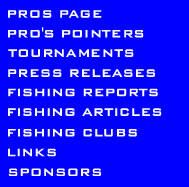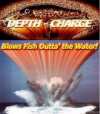The education we get from being able to watch our presentation and watching how fish respond is invaluable. Having the mental picture of how the presentation or lure looks in the water, how the fish approach the lure and what actions caused particular reactions from the fish sets some anglers apart. Anglers who have this education have a huge advantage. There are several ways to get this education. When I was a kid, I would lay on the ice with my jacket pulled over my head so I could look down the hole. I would lie on the ice mesmerized until I was so wet and cold that my body started to have a tingly burning sensation.
On some water, the visibility is such where anglers can look down the hole and watch fish, watch the presentation. Spear houses, dark houses and even portable Fish Traps with dark enough fabric to block out light enable anglers to peer into the under water world below. Many kids who grew up in northern Minnesota for example can recall staring in wonder down a spear hole as fish swam by. Spending this time staring underwater no doubt makes an angler more adept at how fish behave. Having the mental picture helps us put all of the pieces together regarding location, bottom compositions, weed varieties, fish movements and finally, how fish approach and react to a presentation.
There are many fisheries and parts of the Country where good visibility allows for anglers to “sight fish.” By using a dark house, anglers can look down the hole and watch fish. Fishing successfully in ultra clear water takes a few adjustments for example many anglers will wear dark clothing so that they blend in with the inside of their dark houses so they aren’t as likely to spook fish. Some anglers also leave some slush in the hole to mask movement. Some anglers like to drill larger holes specifically for sight fishing so that they can see to the sides much further. While anglers typically watch the fish, many anglers will still use a Vexilar as an early warning as fish will often show up on the Vexilar before you can see them below the hole. The real beauty of sight fishing however is the education regarding the nuts and bolts of your presentation.
Line twist, memory and the wrong jigging motion can keep finicky panfish from sucking in a jig. By being able to watch the motion or rocking on the jig that is necessary to eliminate lure spin and being able to watch how fish respond, positioning themselves inches from the hook and ultimately eating the jig, this education serves anglers very well. In fact, I dare say that this education has created some of the best panfish ice anglers I have ever met or fished with.
What an underwater camera does is allow you to buy this education. What you will learn about how fish eat and how fish move by using an underwater camera is invaluable. I believe this information can make you a better angler. There is a lot of bad information however about how to use underwater cameras effectively. There has also been a negative stereotype regarding the durability of underwater cameras. To be fair, many of the underwater cameras on the market have been low quality price point cameras. In a nutshell, the ice fishing industry took monitors and lenses from other industries and tried to package these components into a waterproof housing at the cheapest possible price point. The result was equipment that seldom lasted more than a year or two. The underwater cameras that are available today from Vexilar are a horse of a different color in that they are dependable and are of much higher quality for today’s demanding ice angler. In fact, the Vexilar Scout is the only camera specifically designed for underwater use where the focal point on the lens has been adjusted for the distortion of water, thus the picture quality is greatly enhanced.
There are however many myths about underwater cameras. For cameras to work, you still have to have good water visibility and a combination of good natural light. Most cameras have lights on the lens but for actual fishing applications, I see fewer fish (walleye, pike, perch, panfish) when the lights are on. Murky, turbid or stained water also makes underwater cameras ineffective. The most notable example of stained water not being conductive for underwater cameras is Lake of the Woods. Even shallow water that is turbid is not very good conditions for cameras. Now there are situations where you might be able to see a foot or two underwater but typically, you need better visibility preferably seven to twenty feet for cameras to shine. Why do you need such good visibility? Because the further away you can put your lens from your presentation, the more functional cameras become.
For panfish, down viewing where the lens is pointed straight down and fished down the same hole in which you are fishing is a very effective and functional technique. This down viewing technique shines with panfish because panfish can be reeled right up the cord. With heavier fish, down viewing is not as effective because they tangle up the cord so if you are targeting walleyes or larger fish, you will have to drill a second hole and point the camera lens at your presentation.
The advantages of down viewing are efficiency. You can fish with one hole and you can almost immediately find your lure as you don’t have to twist or turn the camera lens. The higher you can hang the camera lens above the zone where you are fishing, the better as you can see a much wider or larger area below. Optimum height above your jigging area is five to seven feet. What I have found when I have to drop the lens closer to the bottom is that the area I am looking at shrinks but also as the lens gets closer to the bottom, many fish become hesitant to swim right below the lens. They will swim up and peck at it but it becomes difficult to get fish to swim right below. This phenomenon becomes really apparent as the sun gets low and visibility drops and the camera lens has to get inched closer to the bottom in order to see your jig as the water darkens.
With walleyes in particular, it is important to hang the lens far enough away where you don’t tangle with the cord. For horsing fish up or away from the cord, I like to use braided line like Northland’s Bionic Braid and we often use a fluorocarbon leader. This combination is tough and effective. For viewing, cameras often work best if they are used inside a shelter or at least shaded somehow from the sun. For fishing outside, what often works the best is to use the black and white mode and turning up the contrast.
One of the biggest lessons cameras will teach you is that fish often hit the wrong end of a jig or spoon and that you can actually turn the hook towards the fish as they approach. You can also swing at fish that suck in the jig but don’t move a spring bobber or signal any type of strike. On really tough bites, anglers using cameras can pick off fish when nobody else is catching. Cameras also enable you to sort through the size of fish where you can play keep away with smaller fish.
There is no doubt that there is a time and place for hunkering down over fish, rolling up your sleeves and using the detail a camera can show you to figure out difficult fish. Obviously, not every fishing situation is conductive for underwater cameras but I do believe that when you don’t or can’t use a camera, the lessons learned will continue to serve you well. Underwater cameras can really compliment modern sonar systems like the Vexilar flashers.
Editors Note: The author, Jason Mitchell is credited with pioneering many modern ice fishing methods and techniques and earned a renown reputation as an ice fishing guide before hosting the television show, Jason Mitchell Outdoors which airs on Fox Sports Net North at 9:30 am Sunday mornings and Fox Sports Net Midwest at 8:30 am Saturday mornings.







